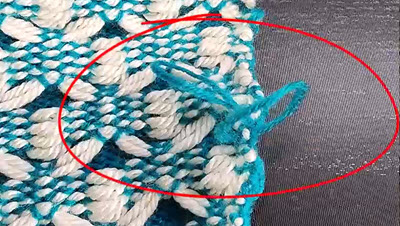
Loops at the edges
Sometimes it's the simplest thing that causes problems when you are knitting.
Check out my "rookie" mistake that caused me a headache.

Sometimes it's the simplest thing that causes problems when you are knitting.
Check out my "rookie" mistake that caused me a headache.
Have you ever noticed unusually large loops along the side edge of your knitting? These aren't decorative features — they're a signal that something is off.
Large, exaggerated loops along the sides of your work are not a normal part of machine knitting. They’re often a sign that something about your technique or settings needs adjustment.
Big loops at the edge are your knitting’s way of asking for help. Instead of ignoring them, use them as a cue to check your technique and settings. It’s often a quick fix that can save your whole project.
The stitch pattern shown is from the Knit it Now Stitch Pattern Library:
KIN 929 KnitWeave
No. Large loops at the edges are usually the result of pulling the carriage too far beyond the knitting at the end of each row.
Taking the carriage too far past the last working needle stretches the edge stitch, creating an oversized loop.
Get into the habit of stopping the carriage just past the last needle, not way off the edge of the bed.
Yes — loose tension, incorrect part settings, or uneven edge needles can contribute, but carriage movement is the biggest factor.
Yes. If the yarn isn’t properly threaded through the tensioner on the mast, or if it’s too loose, it can cause uneven stitches and large loops at the edge. Always double-check yarn engagement before knitting.
Not always. If you catch it early, fix your carriage movement and continue. But it’s best to test on a swatch before going too far.